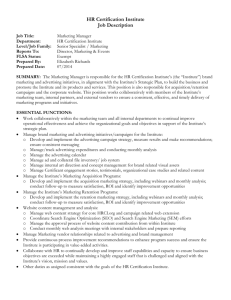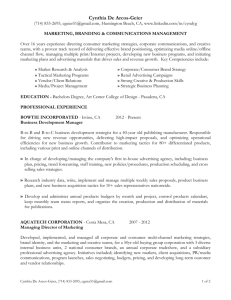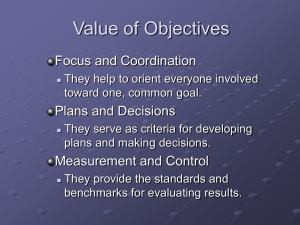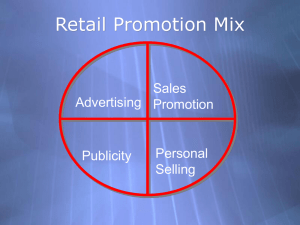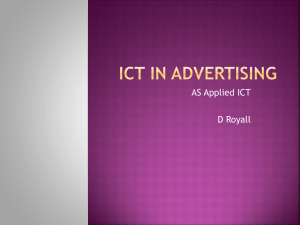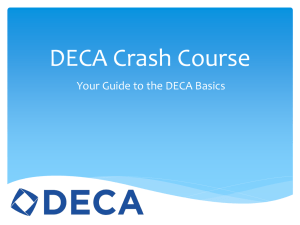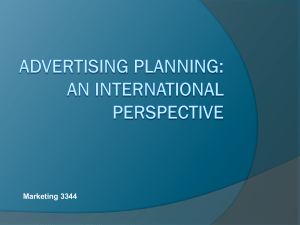The Young & Rubicam Creative Work Plan
advertisement
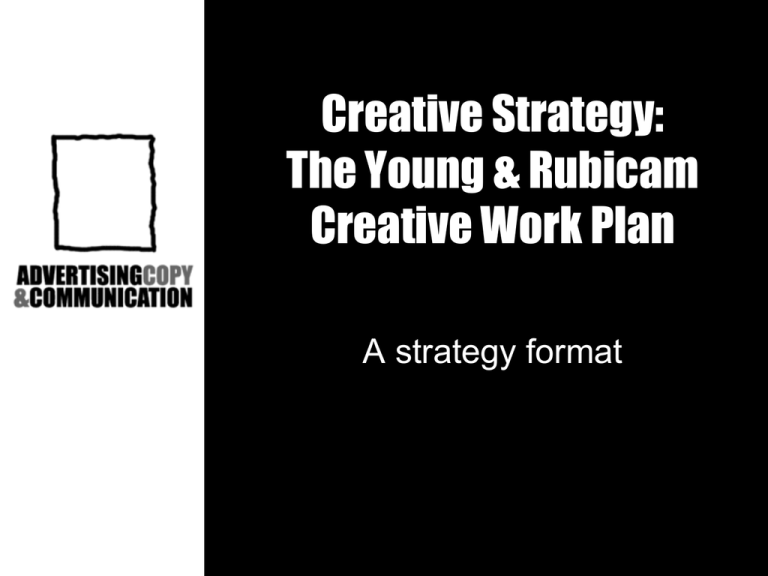
Creative Strategy: The Young & Rubicam Creative Work Plan A strategy format Why the Y&R format? • • • • Simple Specific Durable Advertisable The Y&R CWP 1. The Key Fact 2. Consumer Problem the Advertising Must Solve 3. The Advertising Objective 4. Creative Strategy a. The Prospect Definition b. Principal Competition c. The Key Consumer Benefit d. The Reason Why 5. Mandatories & Policy Limitations 1. The Key Fact • A single-minded statement that sorts out from all the information about product, market, competition, etc. the element that is the most relevant to advertising. Helpful ways to think about the Key Fact: • the biggest opportunity that advertising can help a brand to seize at that time, or • the biggest obstacle that advertising can help a brand overcome, if the brand is going to survive and be successful. • A key fact can come from many places, and if the key fact isn't right, the rest of the work plan usually doesn't hang together. Key Fact is often the client’s perception of a problem. • Why they need advertising! 2. Consumer Problem the Advertising Must Solve • A real problem the consumer has which, by taking an action as a result of advertising, can be solved. About the Problem: • Related to the Key Fact • Consumer’s point of view • A problem advertising can help correct • What keeps the consumer from buying/trying the product? 3. The Advertising Objective • A clear, concise statement of the effect you hope advertising will have on the consumer ... to solve the stated problem. • What you will do to overcome the consumer’s problem (& the client’s problem). The Key to a Good Objective • be specific • Too general: "We want to convince people that we are the best, the premier brand in our category." Consumer Problem Key Fact Advertising Objective 4. Creative Strategy a. The Prospect Definition b. Principal Competition c. The Key Consumer Benefit d. The Reason Why a. The Prospect Definition • Who are the prime prospects? • Demographics • Product Usage • Psychographics NOTE: not all these things b. Principal Competition • a clear, crisp statement of the arena in which your product will do battle. • Brands: Who are they? What benefit do they offer? • Consumer’s mind: What does the message compete with? c. The Key Consumer Benefit • (the Promise) The best argument your brand can offer. • the primary message to be communicated About the Benefit: • specific to target • as competitive as possible • a consumer benefit, not product attribute More about the Benefit: • any ad/commercial's effectiveness should be evaluated, to a significant degree, on registration of the key consumer benefit. • Bill Westbrook: The Single Sentence should be written from the consumer perspective and should encapsulate the one thought we want the consumer to have about our product or service. d. The Reason Why • the one reason it will do what you promise. The Reason Why = Support • Why can we make the offer? • Should come from product performance. • Be as competitive as possible. • A single fact. 5. Mandatories & Policy Limitations • (If Necessary) Restrictions or client data which are necessary to a clear understanding of creative direction. It must be a real mandatory: • legal restrictions / cautions • carry-over of a successful slogan • items of a line to feature • type of casting acceptable • corporate tags • media mandatories • none

